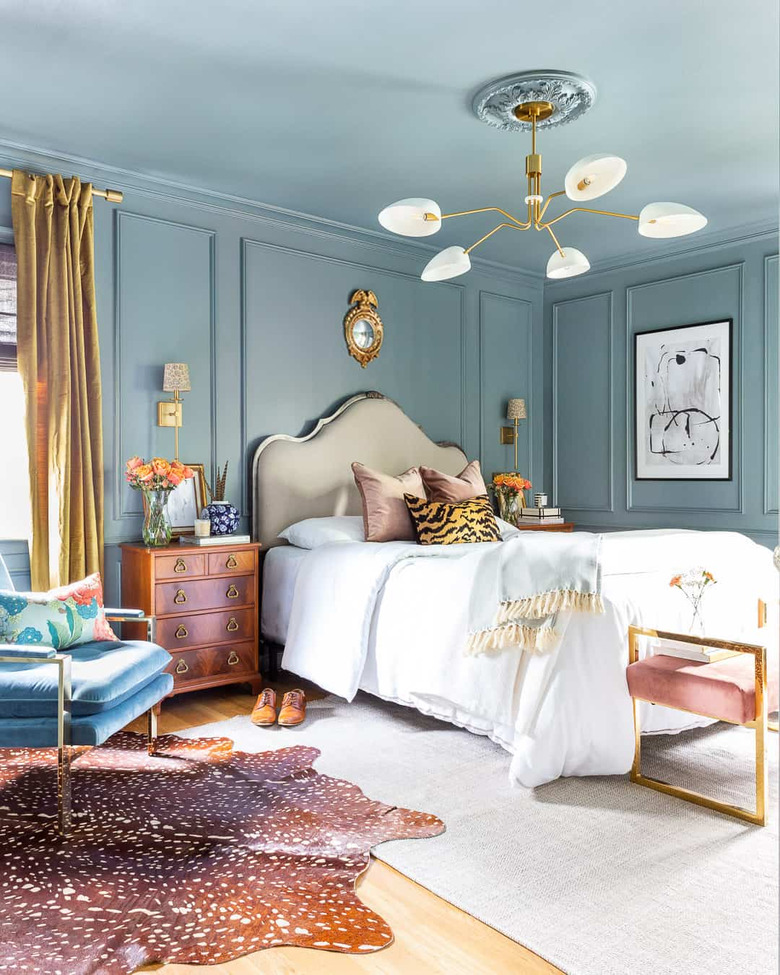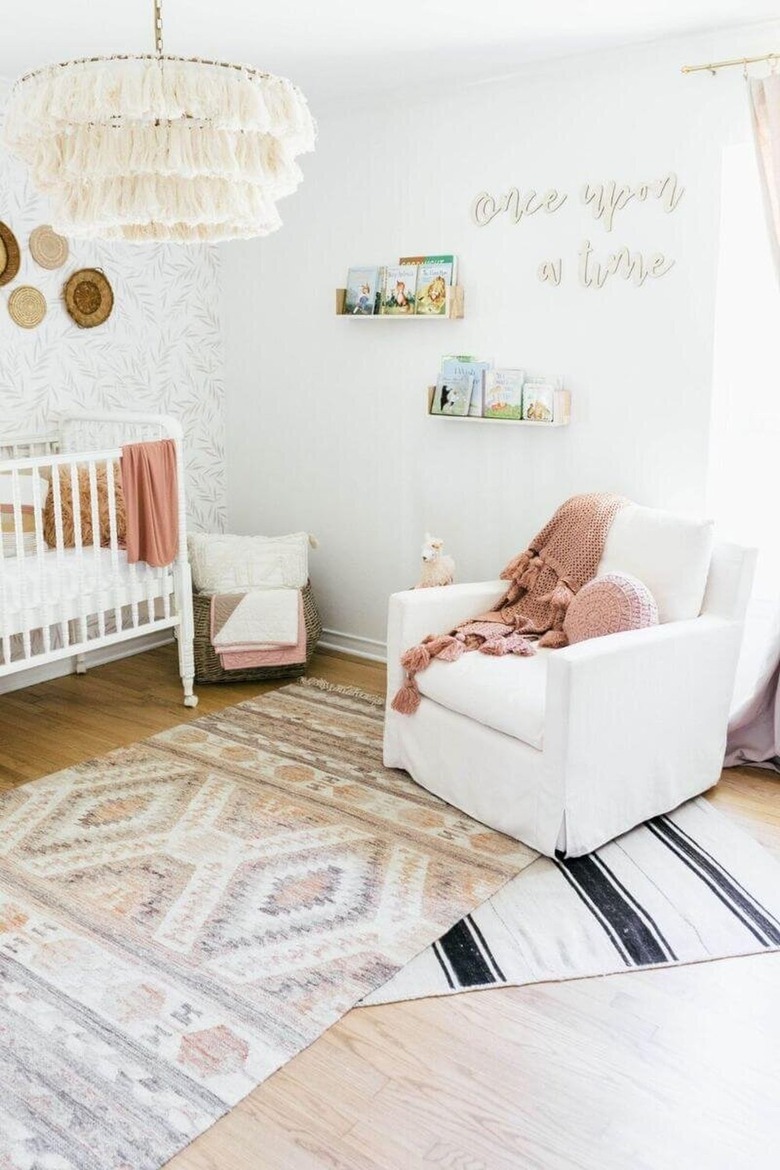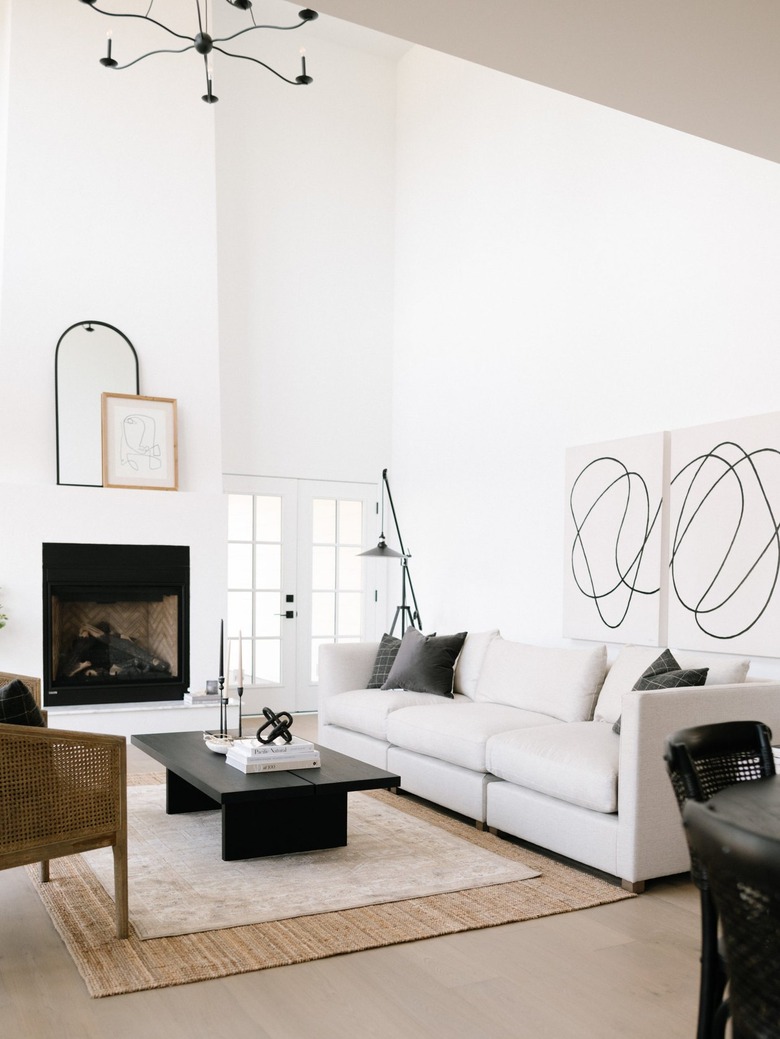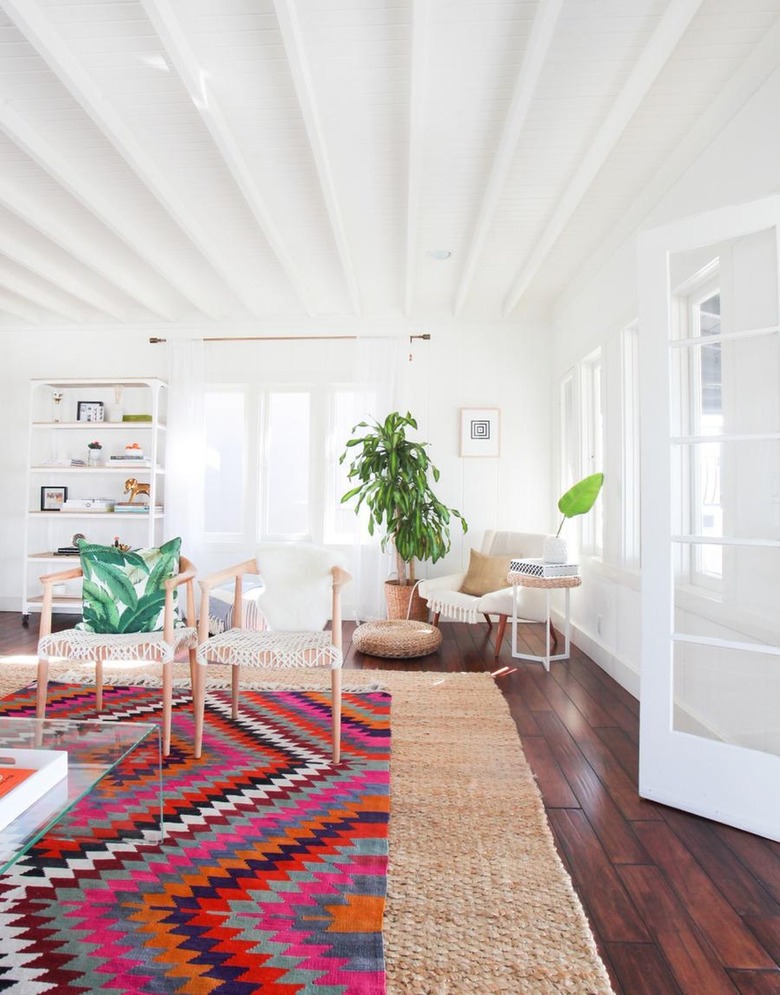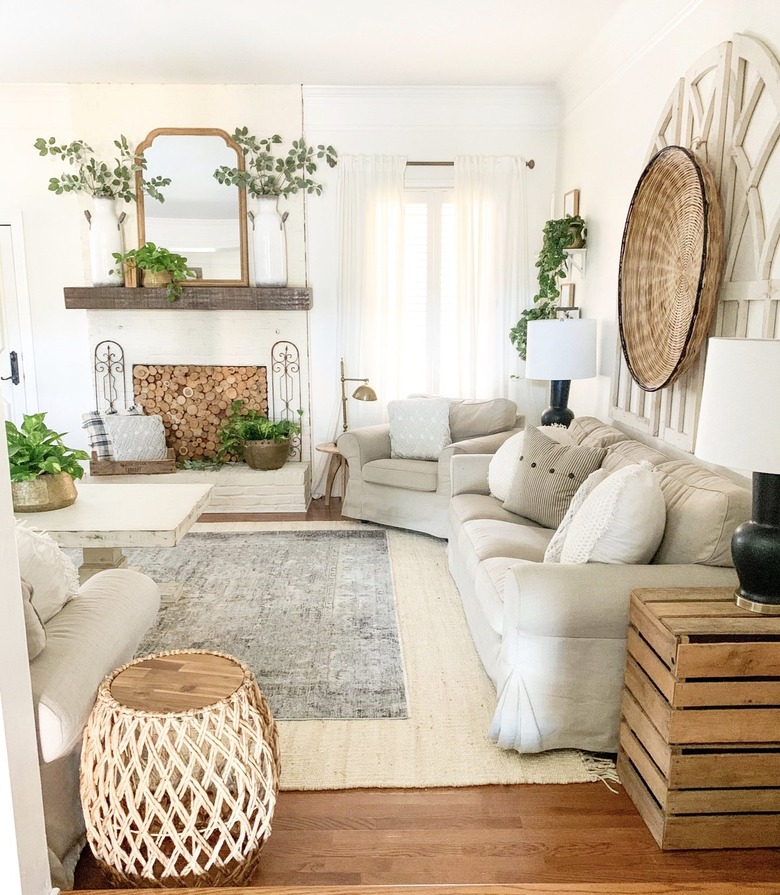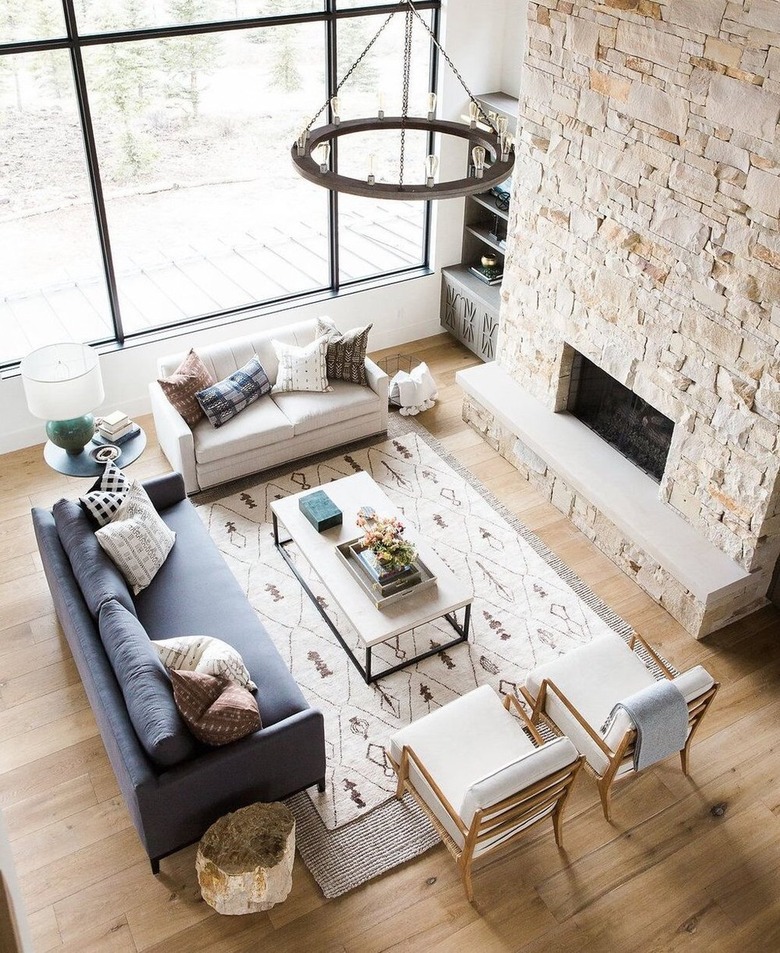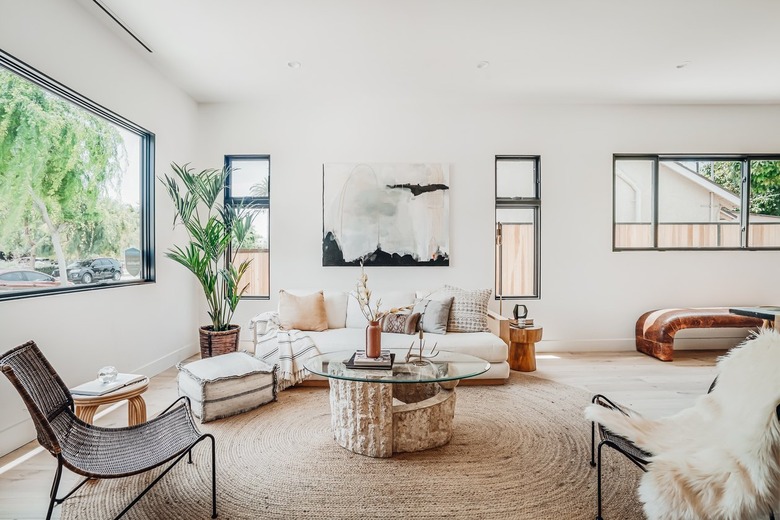How To Layer Rugs In Any Room: 7 Tips For Styling Your Floors
To make a room look truly distinctive, you have to take some interior design risks. Case in point? Layering rugs, a design trend we can totally get on board with.
While you can absolutely put down a single plush landing pad or a few separate accent rugs, layering multiple rugs in a variety of decor styles — from farmhouse to Scandi to modern — is just more visually interesting. You might layer area rugs if you're looking to add a little extra pizzazz or if you want to bring additional warmth and coziness to a room. Or you might do it out of practicality, to delineate specific areas in an open floor plan.
Regardless of your reasons, there are some design tips to keep in mind as you navigate this new world of rug layering. First of all, it can help to place a heavy piece of furniture, such as a dining table or coffee table, on the top rug to keep it from slipping around, which is more likely to happen if the smaller rug rests on top of a flatweave rug. It can also benefit from a rug pad to avoid slippage.
Do some careful measuring before committing to anything. When it comes to rug size, you'll want to keep at least a couple of feet on either side to make the difference between the two rugs clear. If the top rug's edge gets too close to the bottom rug's edge, it just won't look right.
Also, seize this opportunity to play with color and pattern. For a more cohesive, traditional look, keep the rugs in the same neutral color family. For a bolder look, place a vibrant rug on top of a neutral one. Combine unexpected patterns, like a vintage Turkish rug with a striped one, and textures. In other words, this is your time to get creative. For more inspiration, read on for seven of our go-to styling tips.
How to Layer Rugs in Any Room
1. Pair a sheepskin rug with a flatweave option.
A dining room is an ideal space to layer rugs since your table could probably use some visual anchoring. Flatweave rugs will work seamlessly as the base rug. Lend a cozy bohemian vibe to your eatery by adding a small sheepskin on top. The dining table should be heavy enough to keep the rug on top in place, otherwise, you can always use a rug pad. Whatever options you choose, they don't need to share the same colors. In fact, differing hues will offer extra visual interest. It's a look that Mandi of Vintage Revivals perfected in this light-filled setup.
If you're drawn to the look of multiple rugs on the floor, the bedroom is an excellent place to start. Layered rugs will add more warmth and coziness to a space that is all about feeling relaxed and comfy. For a layered rug look that's unique, or even a little bit glam, consider a cowhide rug. Alisa of A Glass of Bovino went with a simple flatweave for the bottom and placed a cowhide rug on top to help anchor a nearby accent chair. The hide rug also offers a welcome dose of pattern. And don't forget: You can always purchase a faux version.
Don't shy away from mixing different patterns together. It's a surefire way to make any space look even more unique, like this nursery styled by Shelby of Farmhouse Living. With a kilim rug on top and a black-and-white striped one underneath, a combination of head-turning patterns is achieved. Plus, it's a great way to put a couple of smaller rugs to work if you don't have the budget to layer large area rugs on top of one another.
Perhaps you're gravitating toward a more cohesive aesthetic for your layered rugs. In that case, we recommend pairing a natural fiber rug, like jute or sisal, with a neutral option that looks perfectly worn and well-loved, resulting in a beautiful, earthy look. To style, place your furniture pieces around the rugs to create a cozy seating area centered on the coffee table. By using both vintage-inspired and jute rugs, Anastasia of The Identité Collective showcases the power of marrying different textures and styles in this minimal living room.
Layering rugs can also be an opportunity to weave a pop of color into your space. To slightly temper down the liveliness of a colorful rug (if that's something you want to do), partner it with a neutral jute or sisal rug. It's an approach that's sure to make your space feel bright and cheerful. And the look works especially well in otherwise all-white rooms, like this living space designed by Casey DeBois. The airy setup has a buoyant, spirited ambiance thanks to the perfectly layered rugs.
Although layered rugs really do look amazing when they hail from similar color families, you may want to boost the visuals a notch in your space. For instance, in a farmhouse color scheme like this one mastered by Carissa of Bless This Nest, a dark gray Turkish rug pops against a larger white tasseled number. And bonus: The darker rug also serves as a backdrop for the ivory coffee table. Follow the lead of this inspired design and punctuate your space with similar dark hues to tie everything together.
As you approach rug layering, you might initially be tempted to hide bold patterns on the bottom. But don't. Live life on the wild side and celebrate graphic patterns by putting them right on top. And to make the look stand out even more, place a solid-hued neutral rug underneath. A jute rug is a superb background choice for a dramatic pattern. If you want to take it a step further, pair your rugs with solid, neutral furniture as demonstrated in this space designed by Shea of Studio McGee. Here, the patterned rug's only competition is the picturesque view outside.
Important Factors to Keep in Mind
Layering rugs might be trending, but we think the look has staying power. There's a reason why in movie scenes, with kings and queens in their throne rooms, you see multiple area rugs strewn across the floor — the look is sumptuous and luxe. There are no hard and fast rules — that's the fun of getting creative with colors, patterns, and textures. Just remember to leave room on all sides of the bottom rug to visually separate the two landing pads from each other. Also, make sure that the top rug is anchored in some way — either with a piece of furniture or a rug pad — so it won't constantly slip around and become a tripping hazard. And if you're feeling overwhelmed and want a foolproof combination, simply place a patterned rug on top of a solid one. It's a visual that always looks great.

